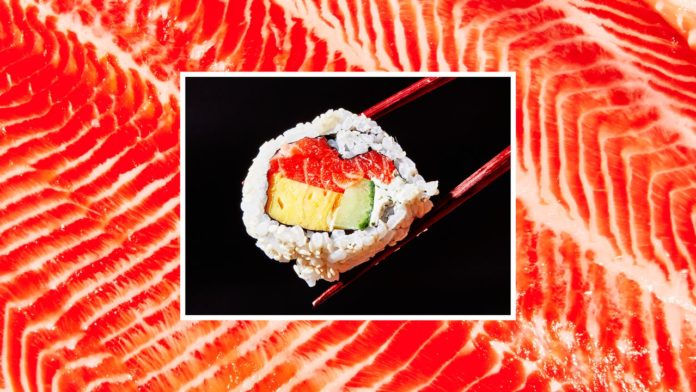Eventually, Miya’s became known for turning the destructive into the delicious. Lai wrapped those shore crabs in crispy potato skin rolls topped with melty local Gouda cheese, folded herbaceous mugwort into steamed rice, and even smoked cicadas to top kale salads with an unexpected crunch. His family leased shellfishing grounds on the Long Island Sound and bought a 10-acre farm nearby to grow vegetables, while letting wild plants flourish for foraging. Lai even received a White House Champions of Change award in 2016 for his efforts.
At the end of 2020, Lai closed the restaurant to focus on a new era. “My life in the restaurant business had become hypocritical and unhealthy,” he says. He was using late-night drinking and smoking to cope with the stress and responsibilities of running a restaurant. “While I obsessed over sustainability, I was not living in a way that was sustainable.”
Now, Lai invites friends and followers to Miya’s In The Woods, an outdoor dinner featuring whatever subversive seasonal ingredients are capturing his attention at the moment. He also offered “sustainable sushi master classes” that taught Japanese tenkara fly-fishing, weed foraging, and sushi techniques.
Lai sees invasive species as the food industry’s next frontier, like fair trade coffee and farm-to-table dining before it. And while sourcing invasives from major restaurant distributors is limited, Lai thinks the industry is primed to expand.
If seafood is to follow in the footsteps of meat, there comes an inevitable question: What is the Impossible Burger of sushi? In the Hulu show The Next Thing You Eat, Momofuku chef David Chang and former Lucky Peach editor in chief Chris Ying visit the San Francisco offices of start-up Wildtype, a company creating cell-grown seafood by cultivating live fish cells in large tanks. They try a piece of cell-grown Coho salmon nigiri. “Delicious,” Chang says, chewing. “You read about it and you’re like, one day.” Ying replies, “I didn’t know it was today.”
Wildtype is still gearing up for market, but there are at least a dozen other start-ups developing plant-based or cell-grown seafood around the world. There are undeniably energy costs to running these high-tech laboratories, but that hasn’t deterred some investors. BlueNalu, a San Diego–based company aiming to introduce cell-grown seafood like mahi-mahi, raised $60 million last year.
For some restaurants, the future is already here. Lucky Robot now uses legume-based tuna from Good Catch in a spicy tuna maki designed to tempt vegans and omnivores alike. The texture is closer to flaky tinned fish than smooth slabs of nigiri, but Huang says it works for spicy tuna rolls, which usually feature chopped fish. Plus, that all-important spicy mayo goes a long way.
Then, of course, there’s the old-school version of “plant-based.” Bun Lai used to stock a sushi buffet with salt-cured Chinese jumping beans and fried pickled artichoke hearts. Silky eggplant is a popular Japanese replacement for barbecued eel. Lucky Robot’s seared mushroom nigiri is delicious in its own right.
It’s impossible to say whether sushi bars of the future will offer mushrooms, lionfish, cell-grown salmon, or all of the above. But hybrid menus like this might be the key to unlocking a more sustainable future.
“I think humanity will have to get away from eating animals,” Pauly says, “and it will be driven by two things: Animals will become rare and expensive, and we will develop substitutes that are tasty.”
Credit: Source link






























